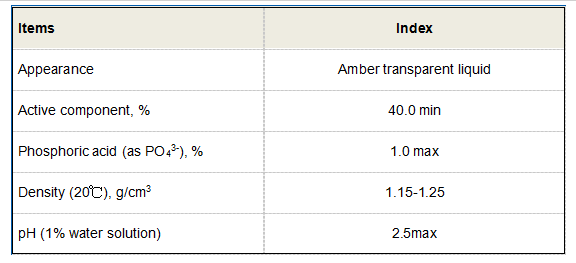flocculation chemicals
Flocculation The Role of Chemicals in Water Treatment
Flocculation is a crucial process in water treatment that involves the agglomeration of particles into a floc, which can then be easily removed from water. This process is particularly important in various industries, including drinking water purification, wastewater treatment, and the production of beverages like beer and wine. The effectiveness of flocculation is largely influenced by the types and concentrations of flocculation chemicals used.
Flocculation chemicals can be categorized into three main groups inorganic coagulants, organic coagulants, and natural coagulants. Inorganic coagulants, such as aluminum sulfate (alum) and ferric chloride, are widely used due to their effectiveness in destabilizing particles in water. When these chemicals are added, they react with the impurities to form a larger aggregate, or floc, which can then settle at the bottom or be easily filtered out. Alum, for instance, not only promotes floc formation but also helps in removing suspended solids and microorganisms.
Organic coagulants, on the other hand, are primarily synthetic polymers that work by bridging particles together. These compounds, such as polyacrylamide, can be highly effective at low concentrations and are often preferred in situations where residual aluminum or iron from inorganic coagulants could pose a problem. Organic coagulants tend to have a lower environmental impact and are beneficial in applications where water quality is paramount, such as in potable water treatment.
flocculation chemicals

Natural coagulants derived from plants or animal sources are gaining attention due to their sustainability and lower toxicity. Examples include Moringa oleifera seeds and chitosan derived from crustacean shells. These natural coagulants have shown promising results in clarifying water while being biodegradable and eco-friendly. Their use in developing countries, where access to chemical coagulants may be limited, is particularly noteworthy as they offer an effective and sustainable solution to water purification challenges.
The selection of appropriate flocculation chemicals depends on various factors, including the characteristics of the water being treated, the specific contaminants present, and regulatory standards. For instance, the presence of natural organic matter can influence the effectiveness of specific coagulants, making jar tests essential in determining the optimal chemical dosage. Furthermore, the pH level of the water can also affect the performance of coagulants, necessitating careful monitoring and adjustments during the flocculation process.
In addition to their application in water treatment, flocculation chemicals also play a role in various industrial processes, such as paper manufacturing, mining, and food production. In these industries, the removal of impurities and the clarification of suspensions are critical to ensuring product quality and operational efficiency.
In conclusion, flocculation chemicals are vital in the water treatment process, helping to remove unwanted particles and improve water quality. By understanding the different types of coagulants and their mechanisms, industries can better tailor their water treatment processes to meet specific needs, ensuring both efficiency and compliance with environmental regulations. As the demand for clean and safe water continues to grow, the role of flocculation chemicals will undoubtedly remain significant in addressing water quality challenges worldwide.
-
lk-319-special-scale-and-corrosion-inhibitor-for-steel-plants-advanced-solutions-for-industrial-water-systemsNewsAug.22,2025
-
flocculant-water-treatment-essential-chemical-solutions-for-purification-processesNewsAug.22,2025
-
isothiazolinones-versatile-microbial-control-agents-for-industrial-and-consumer-applicationsNewsAug.22,2025
-
scale-inhibitor-key-solutions-for-water-system-scale-preventionNewsAug.22,2025
-
organophosphonates-versatile-scale-inhibitors-for-industrial-water-systemsNewsAug.22,2025
-
scale-and-corrosion-inhibitor-essential-chemical-solutions-for-water-system-maintenanceNewsAug.22,2025





